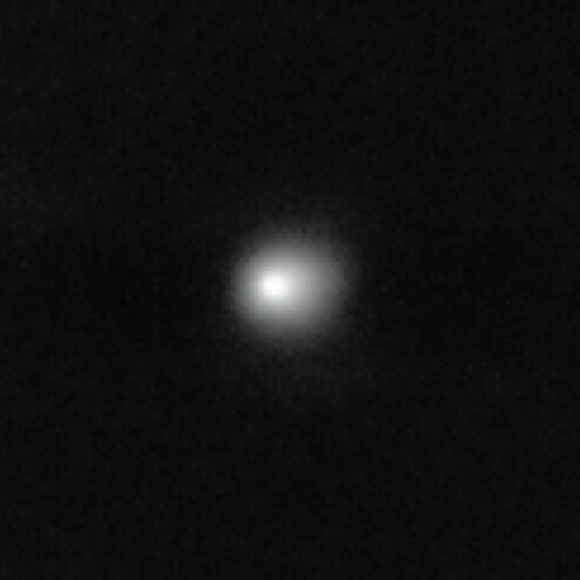Astronomers using ESO’s Very Large Telescope (VLT) have captured new images of 3I/ATLAS, the third interstellar object ever observed.
This VLT/FORS2 image, taken on July 3, 2025, shows the interstellar comet 3I/ATLAS. Image credit: ESO / O. Hainaut.
3I/ATLAS was discovered a week ago by the NASA-funded ATLAS survey telescope in Rio Hurtado, Chile.
Also known as C/2025 N1 (ATLAS) and A11pl3Z, the comet is arriving from the direction of the constellation Sagittarius.
“Its highly eccentric hyperbolic orbit, unlike that of objects in the Solar System, gave away its interstellar origin,” ESO astronomers said in a statement.
3I/ATLAS is currently about 4.5 AU (670 million km, or 416 million miles) from the Sun.
The interstellar object poses no threat to Earth and will remain at a distance of at least 1.6 AU (240 million km, or 150 million miles).
It will reach its closest approach to the Sun around October 30, 2025, at a distance of 1.4 AU (210 million km, or 130 million miles) — just inside the orbit of Mars.
“In the VLT timelapse, 3I/ATLAS is seen moving to the right over the course of about 13 minutes,” the astronomers said.
“These data were obtained with the FORS2 instrument on VLT on the night of July 3, 2025, just two days after the comet was first discovered.”
“At the end of the video, we see all frames stacked into a single image: the deepest and best to date we have of this foreign object.”
“But this record won’t hold for long as the comet is getting closer to Earth and becoming less faint.”
“Currently more than 600 million km away from the Sun, 3I/ATLAS is travelling towards the inner Solar System and is expected to make its closest approach to Earth in October 2025,” they added.
“While 3I/ATLAS will be hiding behind the Sun at that point, it will become observable again in December 2025, as it makes its way back to interstellar space.”
“Telescopes around the world, including VLT, will continue to observe this rare celestial visitor for as long as they can, to find out more about its shape, its composition and its origin.”
